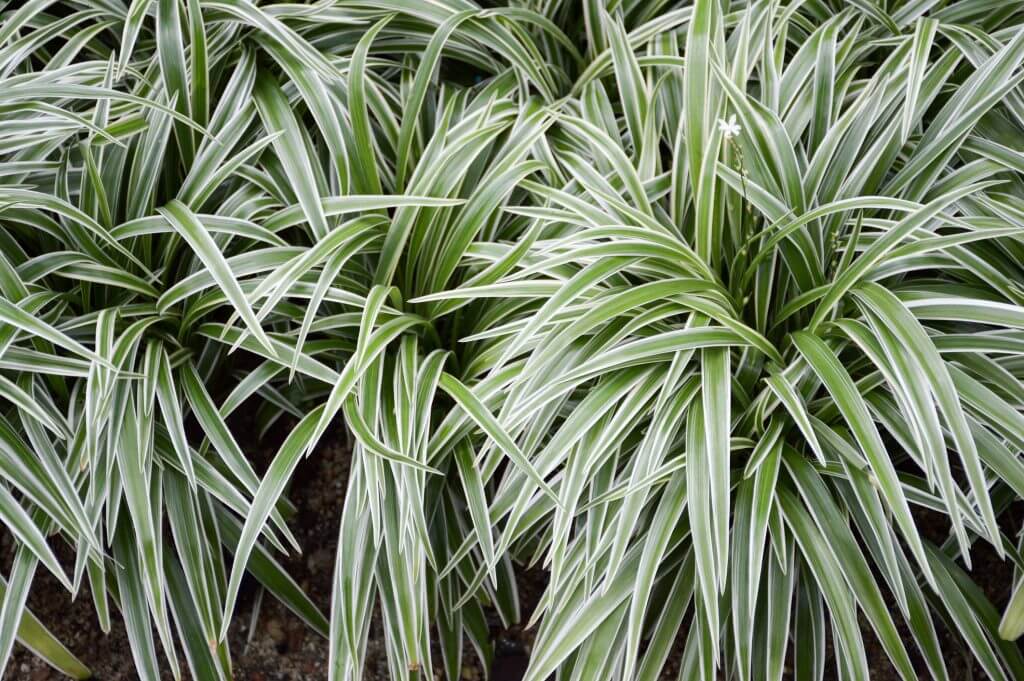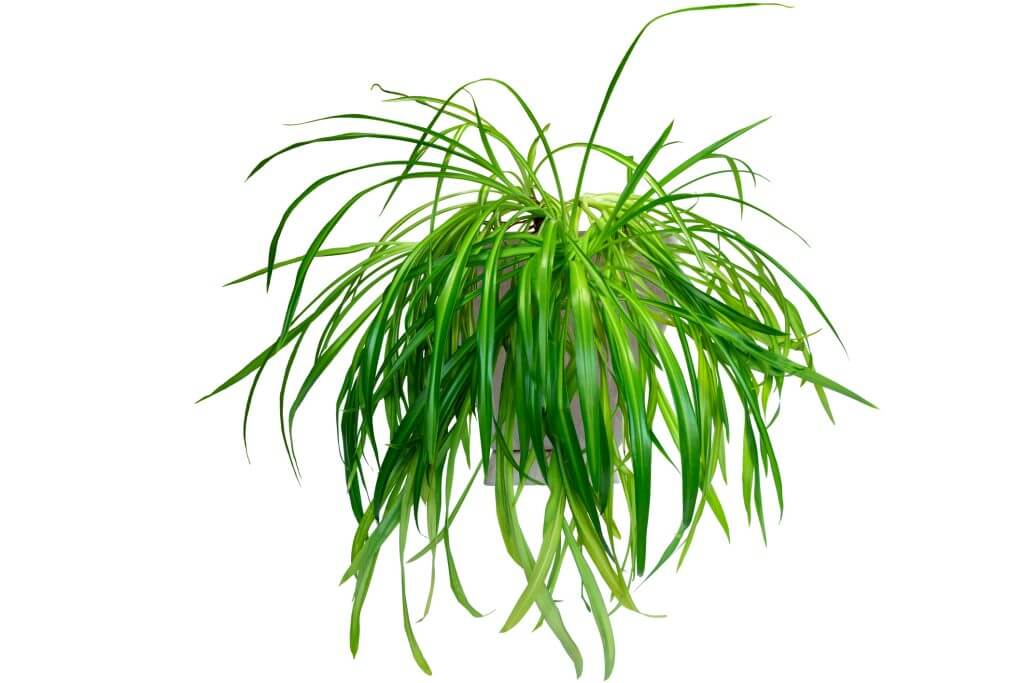Spider plants are popular indoor and outdoor plants for their beautiful foliage.
The long and slender leaves of the spider plants are not only good for decorative purposes, but these plants can also help clean the air.

The Basics of Spider Plant
Spider plants, with scientific name Chlorophytum comosum, are also known as spider ivy, airplane plant, ribbon plant, St. Bernard’s lily, and hen and chickens.
This perennial plant is native to tropical regions but can be grown in most parts of the world.
The spider plant is easy to propagate and maintain, which is why it is a popular plant, whether indoors or as part of the landscape.
Spider plants can grow to about 24 inches (60 cm) tall.
They have long and narrow leaves that can grow to about 8 to 18 inches (20 to 45 cm) long and around 0.2 to 1 inch (6 to 25 mm) wide.
These leaves are green with yellow or light green stripes along its middle, depending on the variety.
The spider plant’s roots are fleshy and tuberous, which makes these flowering perennials hardy in drought.
The flowers of the spider plant, which are greenish-white, grow from a long branched inflorescence that can grow to about 30 inches (75 cm) long. Each flower has six veined tepals that are about 0.2 to 0.4 inches (4 to 8 mm) long.
Chlorophytum comosum ‘Vittatum’
This spider plant has green leaves with yellow, light yellow, or greenish-white strip or band running across the middle.


Chlorophytum comosum ‘Variegatum’
In contrast to Vittatum, Chlorophytum comosum ‘Variegatum’ has yellow or greenish-white margins on its leaves, and green to dark green in the middle.


Hawaiian Spider Plant
The Hawaiian spider plant has distinct variegations on new growth, but the stripes fade as the leaves grow, leaving just faint strips of different shades of green along its foliage.


Chlorophytum comosum ‘Bonnie’
Chlorophytum comosum ‘Bonnie’ is the “curly Vittatum.” This spider plant is popular as hanging plants for the way its leaves twist and curl, especially on its plantlets when they droop out of the container.


Planting Your Spider Plant
You can propagate your spider plant through its plantlets—those smaller plant growth from mature spider plants.
There are two choices: one is to get the plantlets and let them root in water first, and the other is to plant the spider plantlets directly in the planting medium.
Once you have your rooted spider plantlet, prepare a container that is at least 4 inches (10 cm) deep and wide.
Choose a position for your spider plant that is bright but away from direct sun. Too much sun will damage your spider plant.
Fill the container with a well-draining potting soil up to about 2/3 of the container.
Make sure that the base of the plantlet is moist before planting. You can dip it in water if you are planting the spider plantlet directly.
Place the plantlet on the medium and cover the base with more potting medium or soil.
Water it thoroughly after planting and make sure that the soil drains well.
Caring for Your Spider Plant
Temperature
Spider plants are naturally tropical plants, although they can be grown in colder regions.
They prefer temperatures of about 70 to 90 °F (21 to 32 °C).
Spider plants can tolerate lower temperatures down to just above freezing, but it will not grow and thrive with prolonged exposure to temperatures below 60 °F (15 °C).
If you live in a colder place, it is best to keep your spider plants indoors or in a greenhouse.
Water
Spider plants do not need water daily but do not allow them to stay dry for too long—water when the soil is dry. You can test the soil moisture by sticking your finger in the soil at about 2 inches (5 cm) deep.
It is best to use rainwater, purified, or distilled water instead of tap water for your spider plants because tap water may contain salt and fluoride which are not good for these plants.
Make sure that the water is at room temperature—not too cold nor too warm or it will shock your plant and weaken them.
Light
Spider plants like to be in bright places, but away from direct sunlight.
Make sure that you place your spider plant where there is enough screening to keep them from burning from the heat of the sun.
Partly-shaded areas are also alright but do not put your spider plants in deeply shaded areas.
Fertiliser
Spider plants do not require fertilisers.
You can still fertilise them if you want to help their growth. Use fertilisers with no fluoride and avoid boron as well.
Use only half the amount recommended by the fertiliser manufacturer on your spider plant, as too much fertiliser will damage your plant.
Humidity
Keep your spider plants in warm and humid environments.
If you live in a place with low humidity, you can mist your spider plant once in a while to help keep your plant healthy.
Misting also helps even in winter when indoor spaces can be too dry for your spider plant.
Pruning
Unpruned spider plants can grow to a bushy 2 to 3 feet (60 to 90 cm) plant. If you like it that way, then you can leave them as they are.
If you want to keep your spider plants at a certain size, prune in spring or summer.
Cut the longer stems where plantlets or spiderettes grow. Use a sharp pruning scissor and snip at the base of the mother plant.
Remove dead leaves and flowers.
Common Problems with Spider Plant
Brown Tips or Discoloured Foliage
Spider plants may develop brown tips due to several factors: the type of water, too much sun, or too little humidity.
Like mentioned earlier, spider plants do not tolerate certain chemicals in the tap water or fertilisers. Take care not to water or feed them with anything containing fluoride or chlorine.
Keep your spider plant away from direct sun so that their leaves will not burn. Too much sun can also bleach the spider plant’s foliage.
Maintain a humid environment for your spider plants as well.
Spider Plant Pests
Spider plants are susceptible to pests such as spider mites, mealybugs, and aphids.
Insecticidal soaps or solutions can be applied to your spider plants to keep the pests away.
Make sure to keep watch of your spider plants to avoid the pest infestations to go for long periods. Pests, especially aphids, can kill your plant.
[elementor-template id=”4604″]
[elementor-template id=”6387″]
